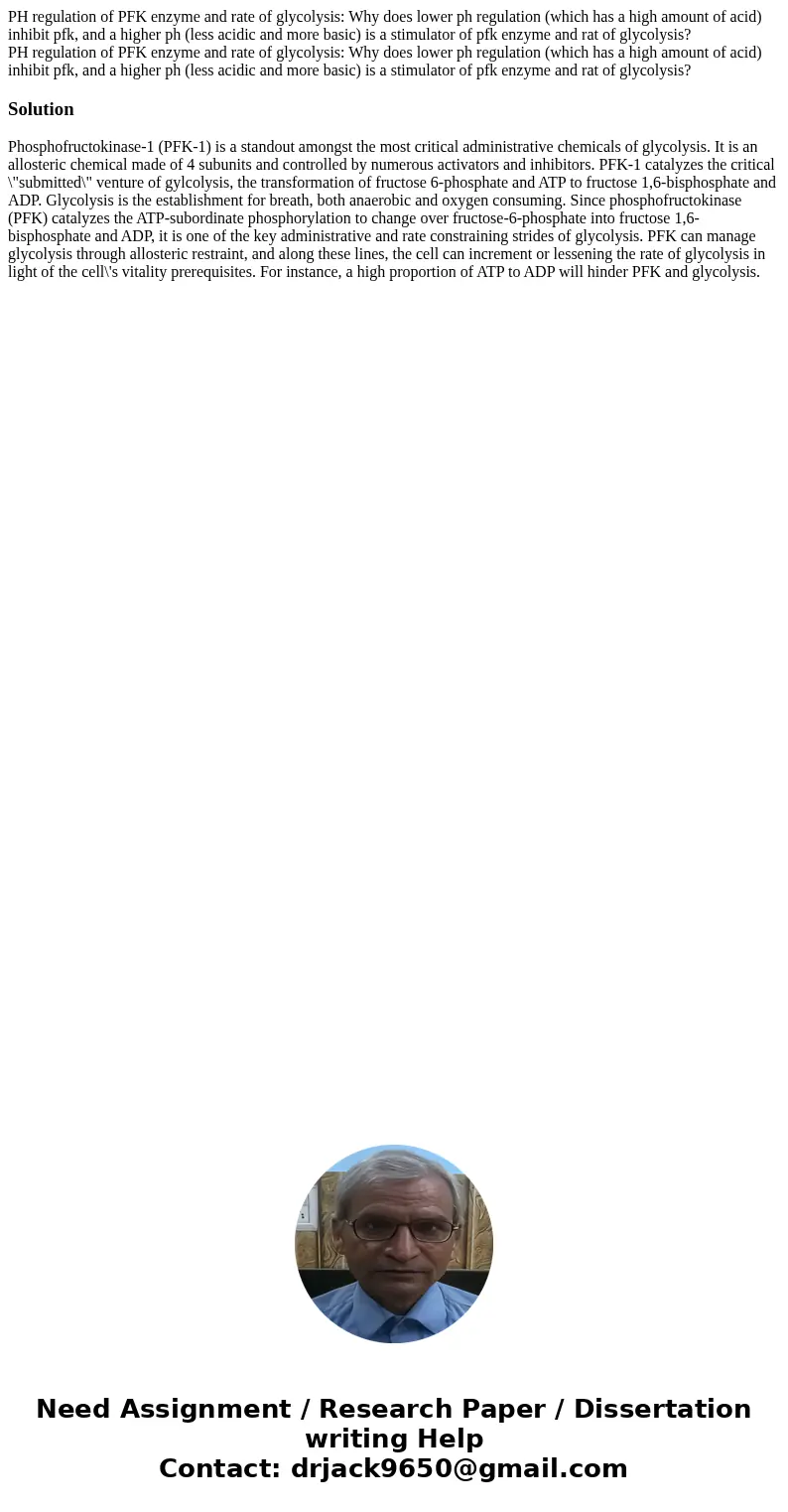PH regulation of PFK enzyme and rate of glycolysis Why does
Solution
Phosphofructokinase-1 (PFK-1) is a standout amongst the most critical administrative chemicals of glycolysis. It is an allosteric chemical made of 4 subunits and controlled by numerous activators and inhibitors. PFK-1 catalyzes the critical \"submitted\" venture of gylcolysis, the transformation of fructose 6-phosphate and ATP to fructose 1,6-bisphosphate and ADP. Glycolysis is the establishment for breath, both anaerobic and oxygen consuming. Since phosphofructokinase (PFK) catalyzes the ATP-subordinate phosphorylation to change over fructose-6-phosphate into fructose 1,6-bisphosphate and ADP, it is one of the key administrative and rate constraining strides of glycolysis. PFK can manage glycolysis through allosteric restraint, and along these lines, the cell can increment or lessening the rate of glycolysis in light of the cell\'s vitality prerequisites. For instance, a high proportion of ATP to ADP will hinder PFK and glycolysis.

 Homework Sourse
Homework Sourse